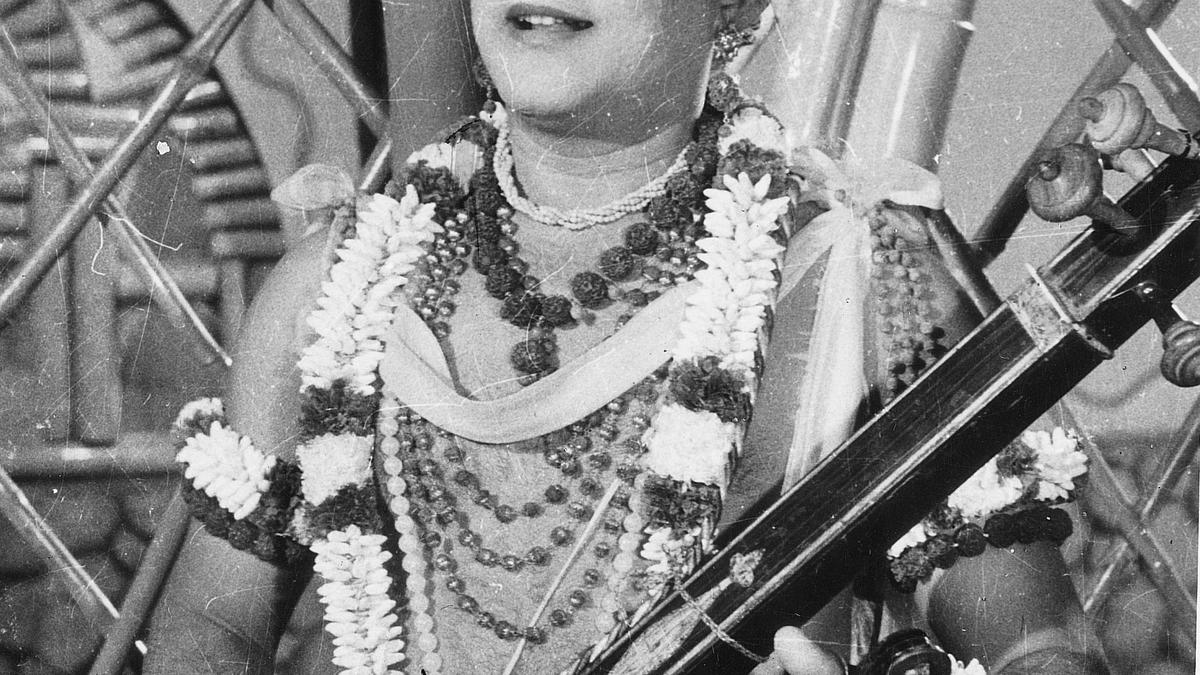Almost a decade ago, when there was a public performance to commemorate late music director M.S. Viswanathan, playback singer Deepan Chakravarthy rendered the thogaiyara (prelude) of a song.
The crowd went ecstatic. Their joy became boundless as he started singing, ‘Senthamizh Thenmozhiyal, nilavena sirikkum malar kodiyal’, testifying to the youthfulness of the song originally rendered by T.R.

Mahalingam over six decades ago. There are two T.R.
Mahalingams in the music world. One is Thenkarai Ramakrishna Mahalingam, the actor-cum-singer, and the other is Thiruvidaimarudhur Ramasamy Mahalingam, the legendary flautist. Actor Mahalingam was born at Thenkarai near Cholavandan in Madurai.
The song, ‘Senthamizh Thenmozhiyal’, was part of the film Maalaiyitta Mangai, produced by poet and lyricist Kannadasan. It was a turning point in the career of Mahalingam after he failed in film production. Effortless singing Vamanan, historian of Tamil film music, says the poetic lines in the traditional tunes from Viswanathan and Ramamurthy and the effortless singing of Mahalingam made all the songs in the film hits.
To a large extent, his singing style matched S.G. Kittappa, who remained unrivalled in the theatre.
Later, Mahalingam made waves by recording ‘Kodaiyile Ilaipatrikollum Vagai Kidaitha Kulirtharuve’, a song of Vallalar, made famous by Kittappa. The song was featured in the film Vedala Ulagam. Mahalingam handled the Carnatic ragas, including Pantuvarali, Bilahari, Kapi, Shanmukhapriya, and Neelambari.
“Kittappa’s song influenced a generation of singers. I do not think any singer other than Mahalingam would dare to render the song and reproduce the effect after Kittappa,” says writer and music historian Lalitharam. But ‘Naan Antri Yaar Varuvar,’ rendered in the raga abhogi in the film Malaiyitta Mangai, was an experiment for Mahalingam, the characteristically high-pitched singer.
It was set to lower octaves and became a pure classic duet. The female singer was A.P.
Komala. Born in 1924, Mahalingam learnt music from Sesha Iyengar and sang at temples and bhajan halls. His singing style reached a theatre group comprising only boys, and Rama Iyer, an agent, convinced Mahalingam’s father to put him in Jaganatha Iyer’s boys company.
“Congress leader Sathyamurthy was among the audience when Mahalingam performed. Captivated by his voice and singing style, the Congress leader presented him with a gold ring. Mahalingam was just 12,” writes Vamanan in the book Thirai Isai Alaigal.
A.V. Meiyappa Chettiar (AVM) cast him as Lord Krishna in Nandakumar in 1938.
Though the film was liked by people, it failed to make revenue, which made AVM to comment, “Operation success; patient died.” The film, however, opened the gate of opportunities and he acted in Bhaktaprahalada, Satimurali, Parasuramar, Poologarambai, and Vamana Avatharam. A major break came in Sri Valli produced by AVM.
When AVM was looking for a hero to match Rukmini, a striking beauty, Mahalingam was chosen as he could sing like S.G. Kittappa.
The film, which ran for 55 weeks, also included the virutham, Kaayatha Kanagathe, made popular by S.G. Kittappa.
A few complained that some portions from Kittappa’s rendition were copied, edited, and used in the film. Mahalingam proved his critics wrong by singing the virutham on the occasion of the 25th week celebration of the film. “In the film, the song was recorded as 25 pieces to match the quality of Kittappa’s voice.
But Mahalingam effortlessly sang it at the event,” writes Vamanan. Sri Valli elevated the status of Mahalingam. He acted in important roles in the next two films — Naam Iruvar and Vedala Ulagam — of AVM.
He was 23 when Vedala Ulagam was released and the success of the two films made him the most sought-after hero. His salary was a princely sum of ₹1 lakh. A series of films followed.
It was during this period that he decided to produce films. But all the films became flops and he lost heavily. New lease of life “To overcome the crisis, he produced Therupadagan which featured Subramania Bharati’s song Ulagathu Nayagiye Engal Muthumariamma, an excellent rendition.
But the film failed to see the light of the day,” says Vamanan. During this period, Mallaiyitta Mangai gave him a new lease of life. In Aada Vantha Deivam, he rendered the song, Kodi Kodi Inbam Tharave, which became a hit.
The duet, Sottu Sottunu Sottuthu Paru Inkey, with P. Susheela was another memorable song. The 1960 also witnessed a dip in his career.
The only exception was Thiruvilaiyadal, starring Sivaji Ganesan in the lead. Mahalingam captured the imagination of the audience by his song, Isaithamizh Nee Seitha Arumsathanai, and the virutham Illathathondrillai. “The virutham expresses the agony of Panapathirar, the temple singer ordered by the king to compete with Hemanatha Pulavar.
I feel the virutham beginning in a benchmark Simmendramathimam was enough to defeat Hemanatha Bhagavathar. Lord Siva need not have descended on Madurai to defeat him,” feels Lalitharam. He also acted with Sirkazhi Govindarajan in Agathiyar.
‘Namachivayam Ena Solvome’ was sung by both. In Raja Raja Cholan, Mahalingam joined hands with the hero Sivaji Ganesan to render the song, ‘Thendralodu Udan Piranthal Senthamizh Pennal’. Thiruneelakandar was the last film in which he was cast as a hero.
It was in 1973. He, however, continued to perform on stages and gave concerts. In 1978, he died at Thenkarai.
Copy link Email Facebook Twitter Telegram LinkedIn WhatsApp Reddit.



















